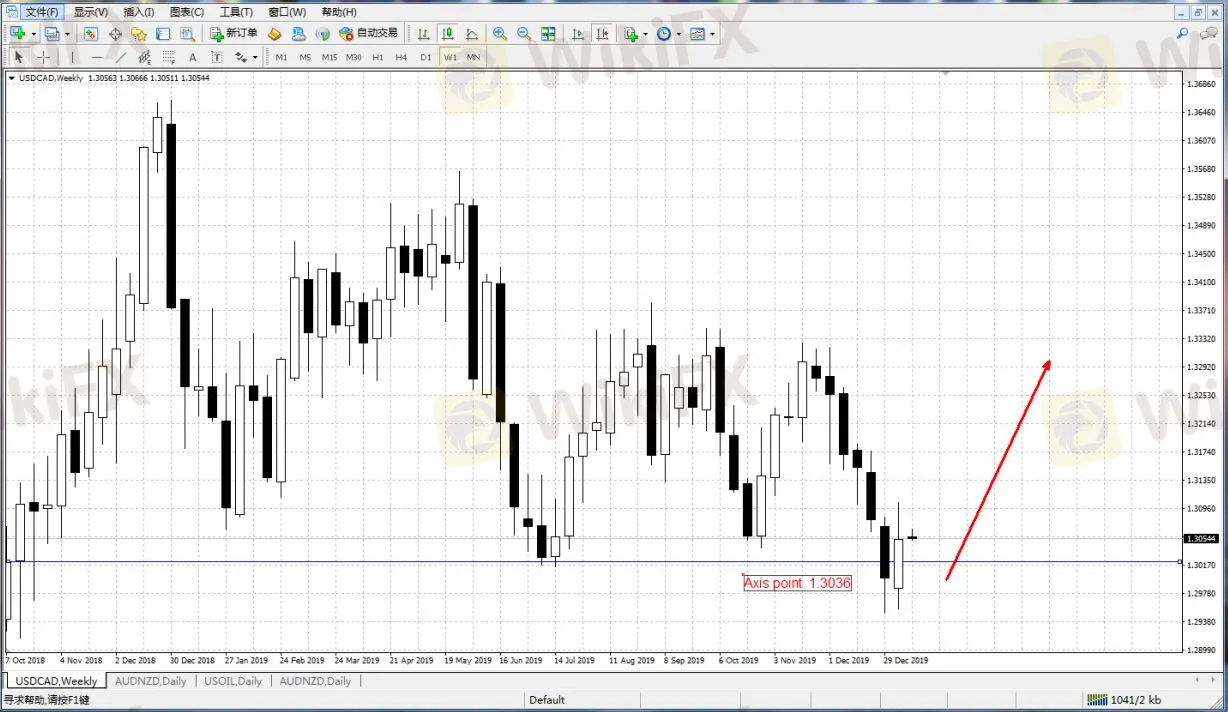简体中文
繁體中文
English
Pусский
日本語
ภาษาไทย
Tiếng Việt
Bahasa Indonesia
Español
हिन्दी
Filippiiniläinen
Français
Deutsch
Português
Türkçe
한국어
العربية
CAD Will Have Less Upward Momentum in the New Year
Abstract:As the G10 currency that performed the best in 2019, Canadian dollar may see a rather smooth horizontal trend this year partly because weakening domestic economy, and partly because the positive influence of easing trade tensions has been fading. CAD rose 5% against the USD in 2019, with nearly half of the increase gained in the last few weeks, benefiting as several other currencies from a reduce of risk factors at the end of 2019.
As the G10 currency that performed the best in 2019, Canadian dollar may see a rather smooth horizontal trend this year partly because weakening domestic economy, and partly because the positive influence of easing trade tensions has been fading. CAD rose 5% against the USD in 2019, with nearly half of the increase gained in the last few weeks, benefiting as several other currencies from a reduce of risk factors at the end of 2019.
Recently released data showed Canada‘s economy is slowing down, suggesting a great likelihood of interest rate cut from the central bank. The Bank of Canada had held interest rate at 1.75% unchanged last year, amid a wave of rate slash by major central banks like the US Federal Reserve and the European Central Bank. Statistics released in the recent few weeks show Canada’s economy shrank 0.1% in October, 2019, while November saw a decline of over 70,000 jobs. Canadas annualized growth based on the quarter-over-quarter rate of Q4 is estimated to be under 1%.
As risk factors will not significantly reduce in 2020, from a technical perspective, 1.3036 will be the pivot point for USD/CAD in the first half of 2020, and if the exchange rate remains above this level, USD may rise against CAD.

Disclaimer:
The views in this article only represent the author's personal views, and do not constitute investment advice on this platform. This platform does not guarantee the accuracy, completeness and timeliness of the information in the article, and will not be liable for any loss caused by the use of or reliance on the information in the article.
Read more

What Will EU Lose After Brexit?
Britain has officially left the European Union on January 31st , 2020, and will soon start negotiations with the European Union regarding bilateral relations in the future. It is believed that Brexit will cause negative impacts on the European Union in multiple aspects.

AUD’s Trend Is Affected by Macro Economy
Latest statistics show Australia’s annualized CPI from Q4, 2019 to be 1.8%, lower than the central bank’s 2%-3% long term target range, which the inflation fails to reach ever since 2017.

What Do the Economic Indicators Say About GBP
British general election at the end of 2019 was conducted against a sluggish economy. Latest statistics show that Britain’s economy growth is stagnant and the once strong labor market has weakened. In the first half of 2020, the pound will need to navigate through the domestic economy, central bank policies and the crucial March budget. In addition, the Brexit negotiation is still in its preliminary stage, whether a free trade agreement can be successfully concluded will also be critical.

Aussie Faces Weak Demands Both Home and Abroad
Australian economy appeared sluggish in 2019. Stagnant wage growth and debts piling up have made consumers significantly reduced their spending, and though Reserve Bank of Australia had lowered the interest rate by 0.75% through 3 rate-slashes, private consumption remained low.
WikiFX Broker
Latest News
Japan to Take Action to Stabilize the Yen
Ringgit Remains Flat Amid Holidays, US Debt Concerns Loom
Taurex: Is it Safe to Invest?
WikiEXPO Global Expert Interview: Loretta Joseph——Unlock the forefront of digital finance
Vietnamese Police Bust $1.2 Million Crypto Fraud Case
XTB Receives Licenses to Operate in Indonesia & UAE
SEBI Bans Big "Finfluencers for Misleading Investors"
WikiFX New Year Bash: Chance to Win 70 USDT
Malaysia’s Securities Commission Enforces Ban on Bybit & Its CEO
WikiFX Review: Is HYCM still reliable in 2024?
Currency Calculator






